168
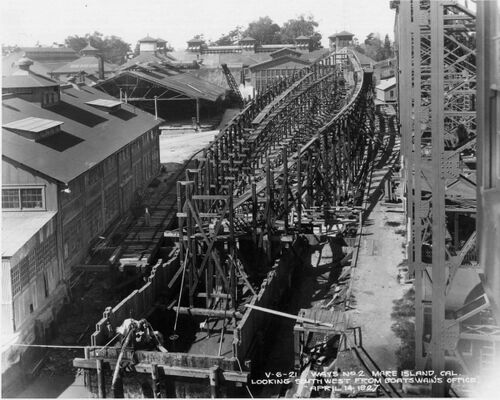
Click here for a large collection of V-6 construction & launch day photos
U.S. Navy photo courtesy Darryl Baker
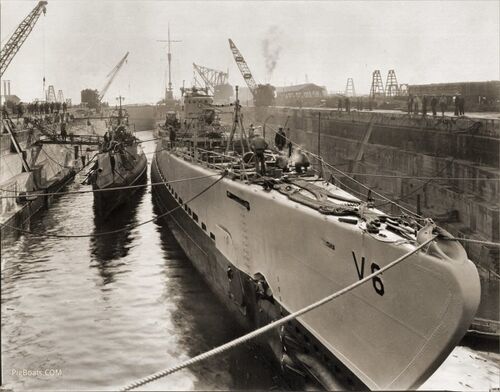
Photo in the private collection of Rid Hedman.

Photo in the private collection of Rid Hedman.
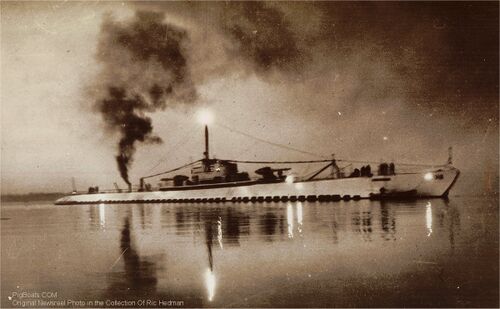
It appears that the V-6 has an oil fired boiler or furnace in her engine room, similar to V-4, as indicated by the heavy black smoke coming from a stack in her after deck. As far as we can tell this is the only photo known to show this feature on V-6. It doesn't seem to be mentioned in any literature about her.
All her running lights and anchor lights seem to be lit and reflecting in the calm pre-dawn waters. The dateline is Seattle, Washington so this may be Puget Sound. The photo is a bit fuzzy probably since the photo was taken from a small boat in the water near the V-6, maybe even from one of her own boats. One of them is seen in the water by the bow planes.
Original Newsreel photo in the private collection of Ric Hedman.
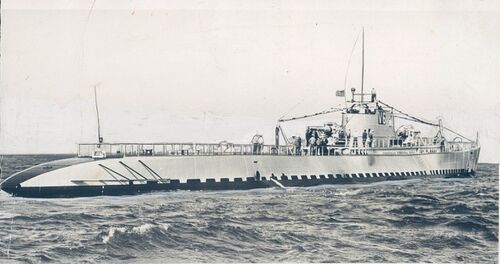
Original Newsreel photo in the private collection of Ric Hedman.
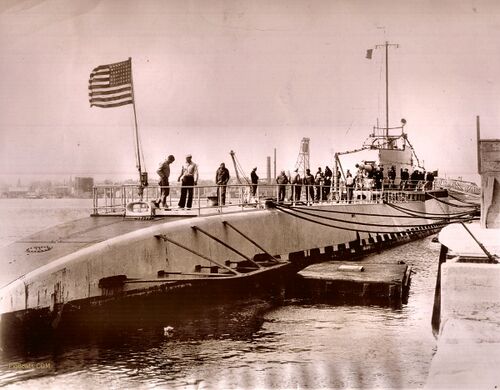
Newspaper Wire photo in the private collection of Ric Hedman.

The building in the background is the old St. Georges Ferry Terminal on Staten Island. It burned to the ground in 1946. According to retired Navy Commander Gerald Levey USN, a native of New York; "The ferry terminal is definitely the St George terminal, The ferry, (to the left of the building, twin stacks), is one of the five Dongan Hills class built in 1931. You can date the photo between 1931 and 1946 when the old terminal burned to the ground. It is a rare photo as the three definitive books on the Staten Island Ferries have no decent photos of that terminal as seen from an approaching ferry."
The truly massive size (for a submarine at least) of the 6"/53 caliber guns is very evident in this photo. These were the largest guns ever mounted on a USN submarine.
Photo in the private collection of Ric Hedman.
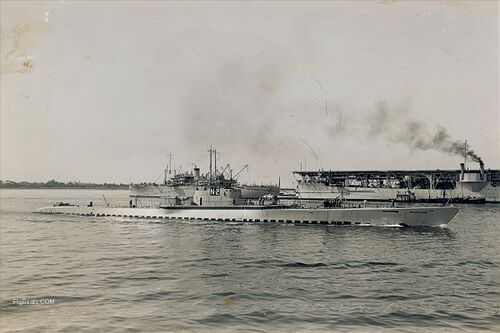
Various crew are on deck aboard Nautilus and it is unclear if she is heading to sea or returning. There isn't any obvious line handling activity going on.
Original photo in the private collection of Ric Hedman.

Nautilus seen underway in the Pacific, August 17, 1935. This photo was likely taken from her sister boat Narwhal. The huge size of the 6"/53 caliber guns is very apparent in this photo.
Original photo in the private collection of Ric Hedman.
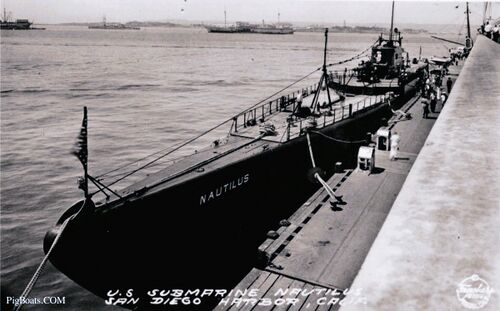
Nautilus moored at Naval Station San Diego, approximately 1935-1936. There looks to be a submarine rescue vessel (ASR) moored behind her. In the left middle background a Clemson-class destroyer is anchored. In the center background the anchored submarine tender USS Holland (AS-3) with the Narwhal (SS-167) moored alongside. It was somewhat unusual for submarines to moor to a pier in San Diego at this time. They normally moored to their tender out in the harbor like Narwhal has.
Original photo in the private collection of Ric Hedman.
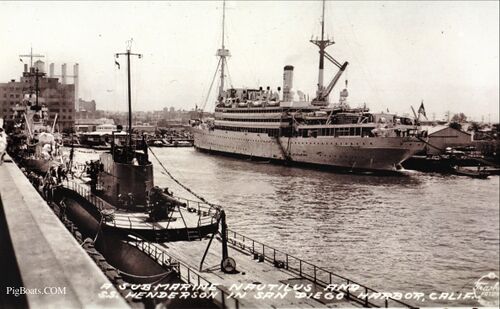
This photo of Nautilus was likely taken at the same time as the one above, and shows her moored in San Diego approximately 1935-1936. Moored ahead of Nautilus is a Farragut-class destroyer. In the right background is the transport USS Henderson (AP-1). The Henderson was a wide ranging and well-known member of the fleet. She made frequent runs from the mainland to Hawaii and to Asiatic Fleet locations. Many old hands of the Pacific Fleet units made their first runs to their new duty stations onboard the Henderson. She became a fixture of the interwar Navy and was fondly remembered by many sailors.
Original photo in the private collection of Ric Hedman.

U.S. Navy photo
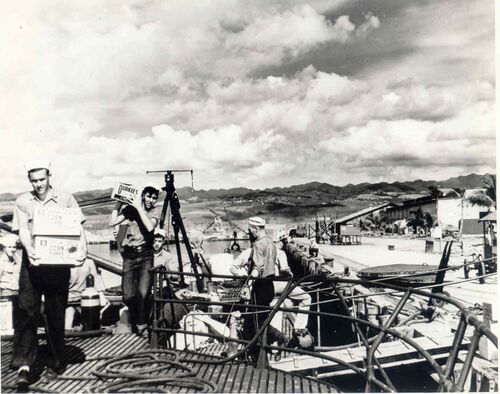
Barely visible in the photo is a large section of deck that has been removed to gain access to the systems in the free flood area. The sections removed can be seen on the pier to the right and above the gangway.
US Navy Photo in the private collection of Ric Hedman

US Navy Photo in the private collection of Ric Hedman
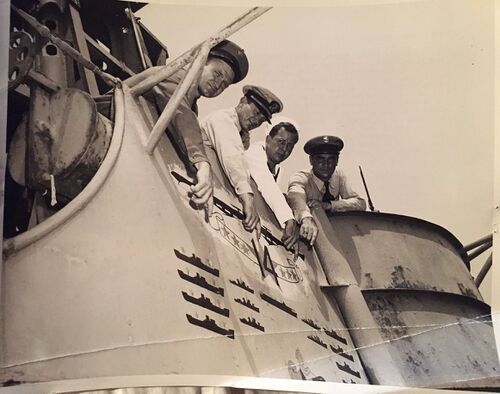
From left to right are Chief Motor Machinist's Mate Joseph V. Goodman of Linville Falls, NC., Ensign John H. Sabbe of Portland, OR., Electrician's Mate 1st Class Robert L. Hyde of Canonga Park, CA., and Chief Gunner's Mate Myles R. Banbury of Portland, OR.
US Navy Photo in the private collection of Ric Hedman
Page created by:
Ric Hedman & David Johnston
1999 - 2023 - PigBoats.COM©
Mountlake Terrace, WA, Norfolk, VA
webmaster at pigboats dot com
